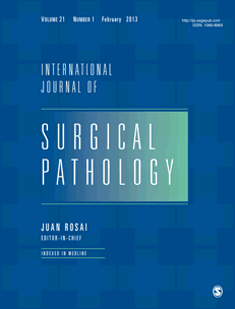
INTERNATIONAL JOURNAL OF SURGICAL PATHOLOGY
Scope & Guideline
Connecting Clinical Practice with Cutting-edge Research
Introduction
Aims and Scopes
- Surgical Pathology Diagnostics:
The journal emphasizes the importance of diagnostic accuracy in surgical pathology, presenting studies on the clinical and pathological features of various tumors, including their histological, immunohistochemical, and molecular characteristics. - Emerging Tumor Entities and Diagnostic Challenges:
Research often highlights newly recognized tumors and variants, along with the diagnostic challenges they pose, aiming to inform pathologists about potential pitfalls in diagnosis. - Molecular Pathology and Biomarkers:
A consistent focus on the role of molecular testing and biomarkers in improving diagnostic accuracy and understanding tumor behavior is evident in the journal's publications. - Case Reports and Literature Reviews:
The journal regularly publishes case reports that provide insights into rare or complex clinical scenarios, accompanied by comprehensive literature reviews that contextualize findings within the broader field. - Quality Improvement in Pathology Practices:
The journal includes studies aimed at improving pathology practices, including metrics for quality assurance and the implementation of new technologies in diagnostic workflows.
Trending and Emerging
- Molecular Characterization of Tumors:
There is a growing emphasis on the molecular characterization of tumors, including studies on gene fusions, mutations, and their implications for diagnosis and treatment, highlighting the shift towards personalized medicine. - Artificial Intelligence and Computational Pathology:
Emerging research on the application of artificial intelligence in pathology, particularly for diagnostic assistance and image analysis, is gaining traction, indicating a technological evolution in the field. - Tumor Microenvironment and Immune Response:
Studies focusing on the tumor microenvironment, including immune cell interactions and their impact on tumor progression and response to therapy, are increasingly featured, reflecting a deeper understanding of cancer biology. - Integration of Clinical and Pathological Data:
Research that combines clinical data with pathological findings to improve diagnostic accuracy and treatment planning is trending, showcasing an interdisciplinary approach to patient care. - Rare Tumors and Novel Entities:
An increase in publications addressing rare tumors and newly recognized entities is evident, as pathologists seek to expand their knowledge and diagnostic repertoire in an evolving landscape.
Declining or Waning
- Traditional Histopathology Techniques:
There is a noticeable decline in publications centered around traditional histopathological techniques, as the field moves towards molecular and genetic analyses that provide deeper insights into tumor biology. - Generalized Tumor Classifications:
Research focused on broad classifications of tumors without specific molecular or genetic context is becoming less frequent, as more studies emphasize detailed molecular profiles and their clinical implications. - Non-Surgical Pathology Topics:
Topics that do not directly relate to surgical pathology, such as broader epidemiological studies or nonspecific clinical reviews, are appearing less frequently, as the journal tightens its focus on surgical pathology.
Similar Journals
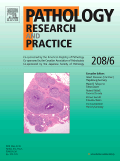
PATHOLOGY RESEARCH AND PRACTICE
Pioneering Research for a Healthier TomorrowPATHOLOGY RESEARCH AND PRACTICE is a premier journal in the field of pathology and forensic medicine, published by Elsevier GmbH in Germany. With a rich publication history since 1978 and an impressive convergence period extending to 2024, this journal serves as a vital resource for researchers and professionals dedicated to advancing the understanding of pathological processes. It holds notable rankings, including Q3 in Cell Biology and Q2 in Pathology and Forensic Medicine for 2023, reflecting its significance in the academic community. The journal aims to publish innovative research findings, reviews, and case studies, facilitating a deeper understanding of disease mechanisms and improving diagnostic practices. Authors and readers alike benefit from its reputable platform, noted for its challenging and rigorous peer-review process. By fostering a collaborative environment and providing open access options, PATHOLOGY RESEARCH AND PRACTICE continues to contribute meaningfully to the discourse within its respective fields, thereby appealing to a diverse audience of researchers, professionals, and students.

PATHOLOGICA
Pioneering Knowledge in Pathology and Forensic Medicine.PATHOLOGICA is a leading academic journal dedicated to the field of pathology and forensic medicine, published by PACINI EDITORE. With a rich history dating back to its inception in 1945, the journal has consistently contributed to the advancement of knowledge in these vital areas of medical research and practice. Currently ranked in the Q1 quartile for Pathology and Forensic Medicine and holding an impressive position as #42 out of 208 in the Scopus rankings, it reflects a significant impact within the academic community, boasting an 80th percentile ranking. The journal is committed to publishing high-quality, peer-reviewed articles that explore innovative research findings and clinical advancements, making it an essential resource for researchers, clinicians, and students alike. Though it does not offer open access, PATHOLOGICA continues to foster scholarly communication by disseminating cutting-edge research findings, thus playing a pivotal role in enhancing pathology education and practice worldwide.

JOURNAL OF CLINICAL PATHOLOGY
Bridging Laboratory Discoveries with Patient CareJOURNAL OF CLINICAL PATHOLOGY, published by BMJ PUBLISHING GROUP, stands at the forefront of advancements in the field of clinical pathology, offering a platform for groundbreaking research and insights from 1948 to the present. With an impressive impact factor and categorized as Q1 in both Medicine (miscellaneous) and Pathology and Forensic Medicine for 2023, the journal holds a distinguished position in the academic community, ranking 22nd out of 208 journals in its category on Scopus and representing the 89th percentile. While the journal does not currently offer open access, it remains a vital resource for researchers, healthcare professionals, and students seeking to stay current with innovative methodologies, clinical techniques, and diagnostic advancements. Located in London, United Kingdom, the journal aims to bridge the gap between laboratory findings and clinical practice, emphasizing the importance of evidence-based pathology in improving patient care and treatment outcomes. Engage with the JOURNAL OF CLINICAL PATHOLOGY to enhance your understanding and contribute to the evolving landscape of clinical pathology research.

APPLIED IMMUNOHISTOCHEMISTRY & MOLECULAR MORPHOLOGY
Illuminating the future of molecular morphology research.Applied Immunohistochemistry & Molecular Morphology, published by Lippincott Williams & Wilkins, stands as a pivotal resource within the fields of histology, medical laboratory technology, and pathology. With an ISSN of 1541-2016 and an E-ISSN of 1533-4058, this journal has been contributing significant research and advancements since its inception in 1996. It serves a diverse audience, including researchers, professionals, and students, aiming to enhance the understanding of immunohistochemical techniques and molecular morphology. Recognized for its quality, it holds category quartiles of Q3 in histology and Q2 in medical laboratory technology and pathology and forensic medicine as of 2023. The journal's rigorous peer-review process ensures that only the most impactful findings are disseminated, thus advancing the education and practice in these critical domains of study. Though it is not an open-access journal, it remains essential for keeping abreast of the latest methodological innovations and applications in pathology and laboratory science, as evidenced by its respectable Scopus rankings and the continual convergence of groundbreaking research published through 2024.

Turkish Journal of Pathology
Pioneering Knowledge in Pathology Since 2013Turkish Journal of Pathology, published by the Federation Turkish Pathology Society, stands as a vital platform for disseminating high-quality research in the field of pathology and forensic medicine. With an ISSN of 1018-5615 and an E-ISSN of 1309-5730, this journal has been an open-access publication since 2013, ensuring that cutting-edge findings are readily available to the global community. Based in Turkey, it aims to contribute significantly to the advancement of pathology as it converges from 2010 to 2024, currently holding a Q3 quartile ranking in its category according to 2023 metrics. As it ranks #129 out of 208 in the Scopus database for Medicine, Pathology, and Forensic Medicine, it offers researchers, professionals, and students invaluable insights and innovative studies that address critical developments in the field. The Turkish Journal of Pathology fosters collaboration and knowledge-sharing, making it an essential resource for anyone involved in pathology research and practice.

AJSP-Reviews and Reports
Elevating Pathology Research Through Peer ReviewAJSP-Reviews and Reports is a peer-reviewed journal dedicated to the advancement of knowledge within the field of pathology and forensic medicine. Published by the renowned Lippincott Williams & Wilkins, this journal plays a vital role in disseminating insightful reviews and reports that contribute to the understanding and application of diagnostic practices and forensic investigations. While currently listed in the fourth quartile (Q4) within its category according to the 2023 metrics, the journal is committed to enhancing its impact and fostering scholarly dialogue among researchers, professionals, and students in the medical community. Despite challenges in Scopus rankings, it provides a platform for significant discourse and innovation in pathology. Operating from the United Kingdom, AJSP-Reviews and Reports is positioned to bridge gaps in knowledge and inspire future research developments. Readers can access valuable findings without open access barriers, allowing for efficient information sharing within the medical field.
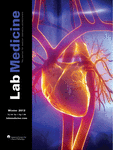
AMERICAN JOURNAL OF CLINICAL PATHOLOGY
Advancing the Frontiers of Clinical PathologyThe American Journal of Clinical Pathology, published by Oxford University Press Inc, stands as a vital resource in the fields of pathology and clinical medicine. With a rich history dating back to 1945 and an impressive impact factor reflected in its Q1 ranking in Pathology and Forensic Medicine, this journal serves as a cornerstone for researchers and professionals seeking to advance their knowledge and practice. Covering a breadth of topics within the discipline, it is recognized in 2023 as ranked #24 out of 208 in its category, highlighting its esteemed reputation within the scientific community. Although the journal does not currently offer open access, its rigorous peer-reviewed articles and cutting-edge research make it an essential addition to any academic or clinical library. The ISSN for print version is 0002-9173, with an E-ISSN of 1943-7722 available for digital access. Researchers, students, and practitioners alike will benefit from its comprehensive scope and commitment to disseminating high-quality scientific inquiry.

Malaysian Journal of Pathology
Advancing knowledge in pathology and medicine.Malaysian Journal of Pathology, published by the MALAYSIAN JOURNAL PATHOLOGY, stands as a pivotal resource in the fields of pathology and medicine, contributing rich insights since its inception in 1979. This peer-reviewed journal, based in Malaysia, is dedicated to disseminating original research, review articles, and case studies that advance the understanding of disease mechanisms and diagnostics. With a current impact factor reflecting its ranked positioning—Q4 in Cell Biology, Q4 in Histology, and Q3 in both Miscellaneous Medicine and Pathology & Forensic Medicine—this journal serves as an essential platform for researchers, clinicians, and students alike. Although it operates without open access, its scholarly rigor and contributions are well recognized, holding ranks such as #84 in Pathology and Forensic Medicine according to Scopus. The Malaysian Journal of Pathology is committed to fostering innovation and excellence in medical research, making it an invaluable tool for professionals seeking to stay abreast of significant advancements in the pathology domain.
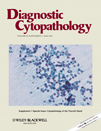
DIAGNOSTIC CYTOPATHOLOGY
Transforming Disease Management with Cytological ExpertiseDIAGNOSTIC CYTOPATHOLOGY is a scholarly journal dedicated to advancing the field of cytopathology through the publication of high-quality research and reviews. Founded in 1985 and published by Wiley, this journal provides vital insights into the diagnosis and management of diseases through cytological techniques. With a strong presence in the academic community, it currently holds a Q3 ranking in the fields of Histology, Medicine (miscellaneous), and Pathology and Forensic Medicine, reflecting its commitment to fostering knowledge and innovation in these areas. Researchers and clinicians alike can benefit from its comprehensive articles that delve into cutting-edge methodologies and diagnostic strategies. Although not an Open Access journal, DIAGNOSTIC CYTOPATHOLOGY remains a crucial resource for professionals seeking to enhance their understanding and practice in the diagnostic realm. With an ISSN of 8755-1039 and an E-ISSN of 1097-0339, the journal continues to publish impactful studies well into 2024, ensuring that essential advancements in cytopathology reach a global audience.
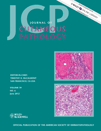
JOURNAL OF CUTANEOUS PATHOLOGY
Decoding the Complexities of Cutaneous ConditionsJOURNAL OF CUTANEOUS PATHOLOGY, published by WILEY, serves as a vital resource in the fields of dermatology, pathology, and histology, reflecting its distinguished position with impressive categorization quartiles: Q2 in Dermatology and Pathology and Forensic Medicine, and Q3 in Histology for 2023. Established in 1974, this esteemed journal features peer-reviewed research that drives advancements in understanding skin diseases, with a convergence period extending to 2024. The journal's impactful contributions are evident through its Scopus rankings, placing it among the top tiers of its category, specifically holding the 52nd rank in Dermatology. Researchers, professionals, and students will find the journal invaluable for its rich content and critical insights into cutaneous pathology, despite its current non-open access status. The journal's dedication to fostering knowledge in this specialized field underlines its significance as a go-to reference for ongoing scholarship and clinical practice.